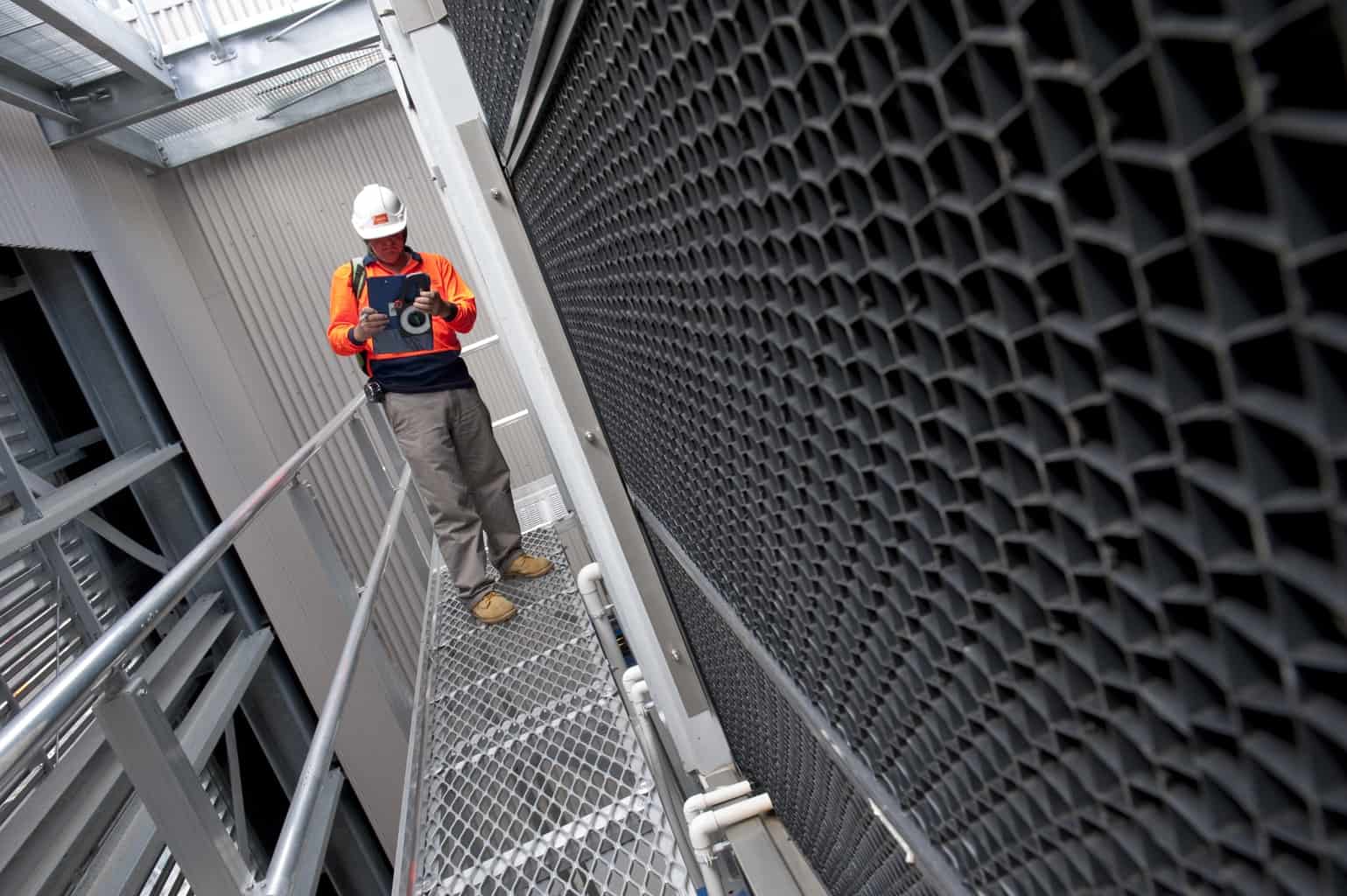A guest post by Carl Sachs
 The revised Australian Standard AS1657 for fixed ladders, platforms and walkways released in October 2013 plugs some serious holes. Guard rails made of rubber, for example, are now explicitly unacceptable.
The revised Australian Standard AS1657 for fixed ladders, platforms and walkways released in October 2013 plugs some serious holes. Guard rails made of rubber, for example, are now explicitly unacceptable.
While absurd, rubber guard rails technically complied with the 21-year-old AS1657 and the example shows just how sorely an update was needed.
Four big changes to AS1657
The biggest changes to AS1657 concern selection, labelling, guardrail testing and the design of fixed ladders.
Access selection
The new standard deals with the selection of access methods. It explains when to use different types of access, adopting a hierarchical approach consistent with the OHS legislation.
A new “Safe Ladder” appendix details how to be sure that ladders satisfy technical and ergonomic requirements for workplaces.
Fixed ladder design
The most significant set of changes to AS1657 concerns the design of fixed ladders. Over the 21 years since the standard was written, there has been an explosion in the sales of “cut to size” ladders, which led to several safety-related issues:
- Rung spacing dimensions
- Uneven rung heights at the base of ladders
- Non-level landings
- Fixings suitability to the structures
- Unsuitable fitment of hand holds leading to potential safety hazards
- Methods of mounting of cages and fixing to structures
- Lack of suitable design criteria
- Use of fall arrest systems
The revised AS1657 includes changes to design criteria, dimensions of rung spacing, mounting of cages, fixings to structures, inappropriate use of hand holds plus several other small issues.
The net result is a clearer and a safer set of requirements for users and manufacturers. Additional costs to the industry are expected to be minor and will be offset by multiple benefits, including;
- improved safety for users in terms of rung spacing, ladder strength and support fixings
- increased rung design loadings that are now aligned with portable ladders
- increased emphasis on the use of sloping ladders in the range of 60 to 75 degrees
- provision for the use of complying fall arrest systems as an alternative means of fall protection
- new ladder testing protocols as an alternative means of supplying compliant products
- new provisions for single-stile ladders in specific applications.
Mandatory labelling
Identification assists building owners and asset owners to identify responsible parties and assist the workplace safety regulators with incident investigation and root cause analysis but was not mandatory under the old standard.
The revised standard mandates permanent product labelling to:
- verify compliance of the installation with AS1657
- identify the designer, fabricator, installer and certifier
- provide for effective product recalls of faulty equipment
The labelling also allows manufacturers to deliver key information such as servicing requirements and special use instructions, will lift the accountability of suppliers, and assist with traceability and incident investigation.
Guardrail, ladder and staircase testing
The testing procedure contained in the old standard was seriously deficient for guardrail. In fact, a rubber guardrail would have passed because there were no deflection requirements.
The new standard, AS1657-2013, aligns with AS/NZS 1170.1 – 2002, requiring higher concentrated loads and line loads for guard railing systems. Importantly, it references standards to ensure the correct application of load factors and load combinations in the design and testing process.
New tests for ladders and staircases have been introduced to align with the testing regime for portable ladders.
Other changes
Updates to the standard also address the slip resistance of walkways and an alternative test method for stairways other than structural calculation. It is essential that there is a straightforward way of proving the performance of products because many of the items produced under AS1657 are manufactured by companies without the engineering resources to design by calculation.
In the case of mass-produced proprietary systems, the test method is used as an adjunct to design and is compulsory.
Step irons, too, are revisited. While they were covered by AS 1657-1992, additional provisions for sewerage applications were included in AS 4198-1994. EN 13101 is now extensively referenced.
A safer and easier to use standard for walkways, ladders and platforms
After 21 years, AS1657 was very outdated. This revision will provide increased certainty for manufacturers and specifiers of access equipment that can only lead to greater safety for users.
About the author:
Carl Sachs is the managing director of falls prevention specialist Workplace Access & Safety. He was a member of the committee responsible for the revision of Australian Standard 1657: Fixed platforms, walkways, stairways and ladders – Design, construction and installation and represents the Facility Managers Association on standards committee AS1891 (Industrial fall-arrest devices). Carl’s business, Workplace Access & Safety, provides the full safety package for fall prevention – from risk assessments and system design through to installation, training, annual maintenance and certification.
